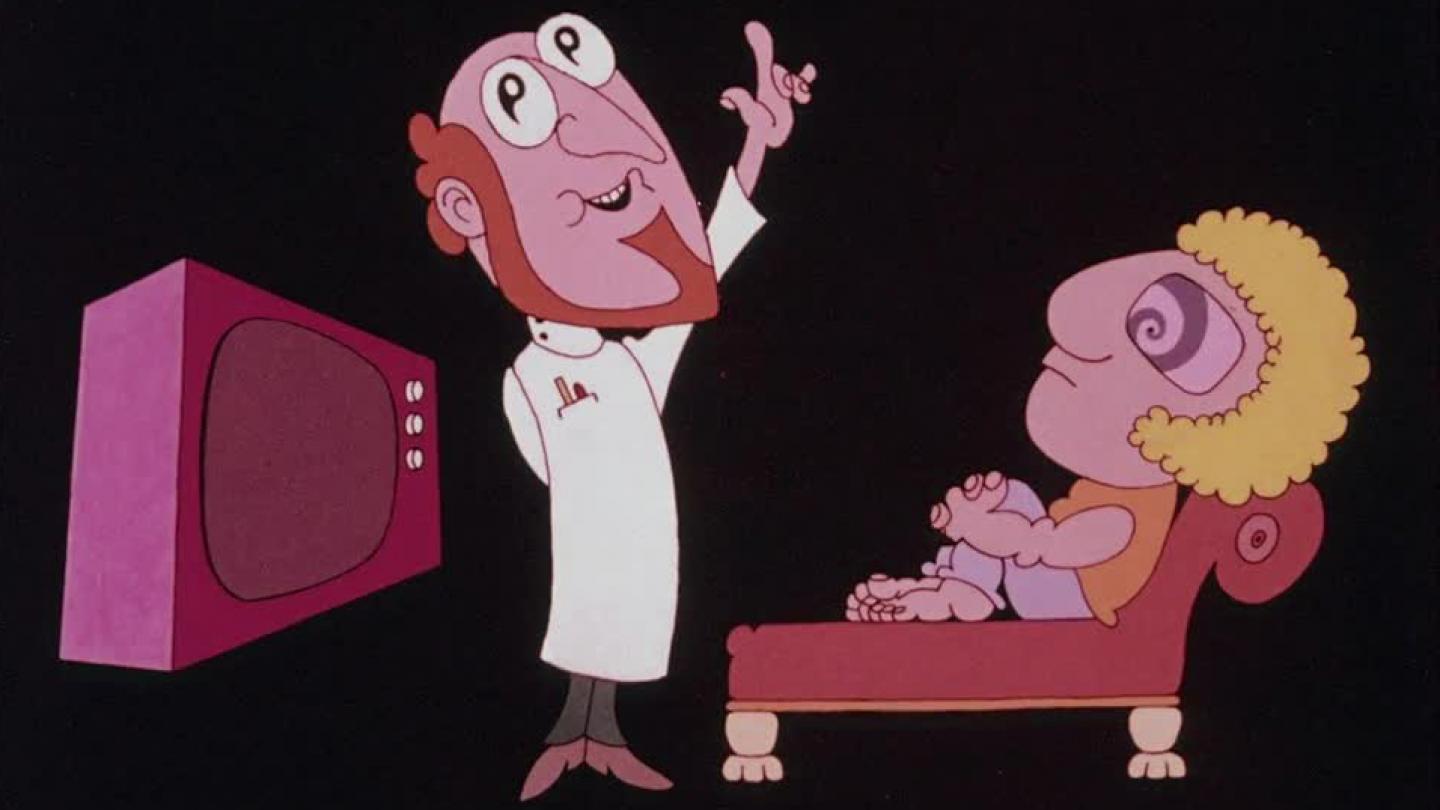


In April 1972, Alan Kitching was working on a short animation film for the British Film Institute (BFI) called The Dream of Arthur Sleap who was dangerously addicted to boring old movies and thus in the need of BFI.
Colin Emmett had been trying to get Alan interested in computer animation using the Atlas Computer Laboratory's SC-4020 microfilm recorder. Colin persuaded Alan that he could write Fortran programs to achieve this and they thought they would try to generate the end BFI credit using computer animation.
After a little experimenting, it seemed that the final image of the BFI logo could be generated on the SC4020 by a sequence of 200 vertical lines across the screen. The coordinates for these lines was achieved by putting some graph paper over the logo and tediously reading off the coordinates by hand.
Colour was added in the optical printing.
To animate the lines, the coordinates were read into a Fortran program that rotated the lines to horizontal and then moved them randomly to positions just off the screen either at the top or bottom of the viewable area. The SC4020 animation then consisted of gradually moving the lines frame by frame until they reached their original positions.
It is believed that this was one of the earliest uses of computer animation in a conventional animated film. From this starting point, Alan Kitching added various other effects and controls until he had a computer system that he called ANTICS.
The exact placement of the starting points for the horizontal lines is unknown.